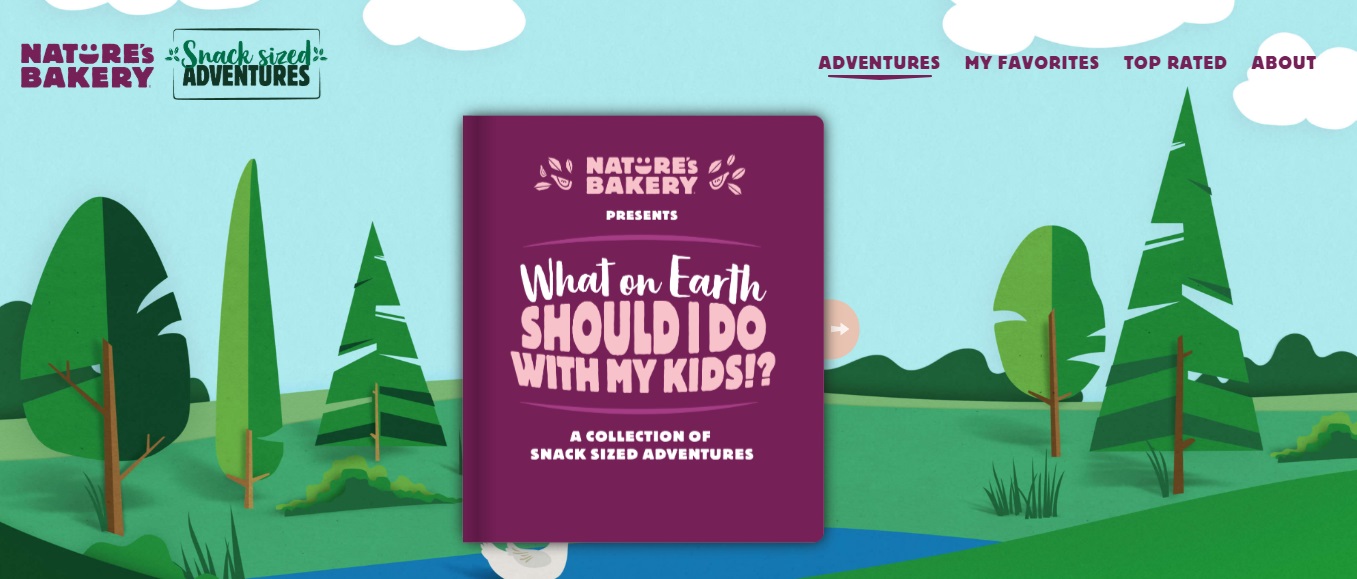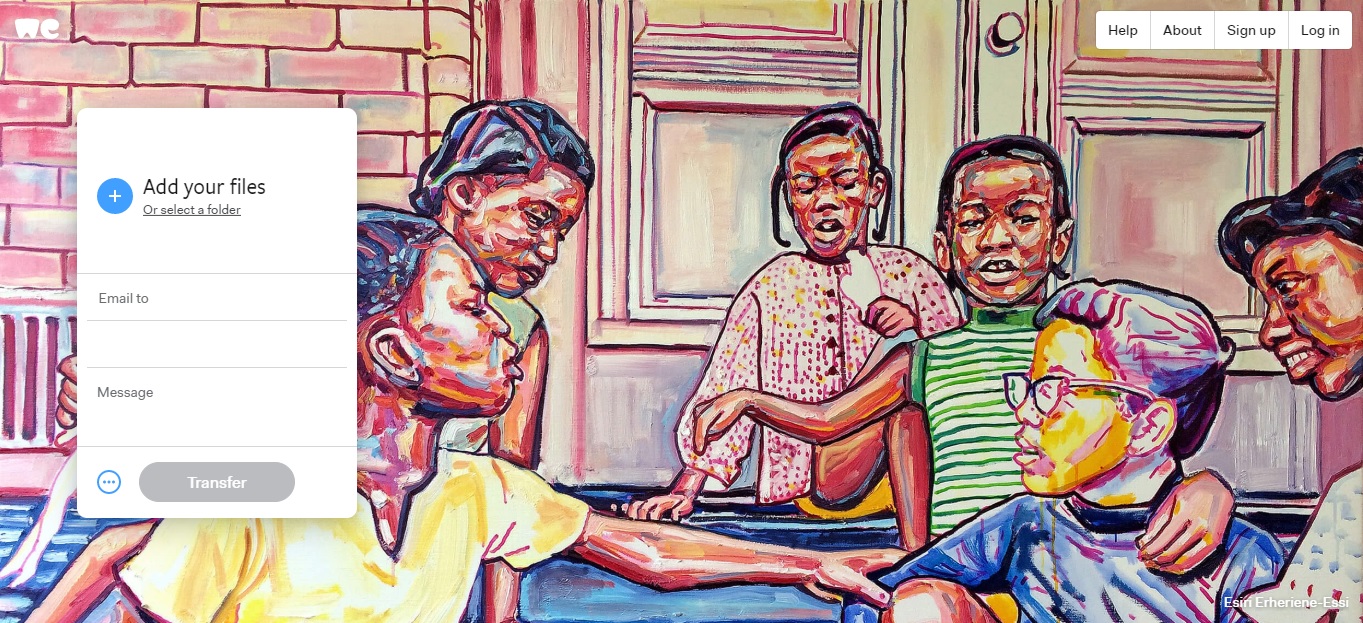This week’s marketing activations mostly revolve around Covid19. While Lifebuoy has started a hand wash challenge on TikTok to raise awareness and curb the spread of coronavirus, Nature’s bakery is offering game ideas for parents to keep their children entertained during this pandemic. Meanwhile, WeTransfer’s new immersive experience allows users to switch off from the daily news cycle and engage in something creative. Here are the marketing activations that we liked this week:
1. Nature’s Bakery

US-based snack brand, Nature’s Bakery has created a new marketing program targeted at families that are looking for things to do together during this coronavirus pandemic. This campaign is called “Snack Sized Adventure”. Nature’s Bakery has come up with a website with game ideas for kids stuck at home. Funnily, the website is called “What on Earth should I do with my kids?“. It features suggested activities and game ideas for children. For instance, one such idea is to turn your kid’s favourite book into a play and get them to write, act and put up a production at home! With each idea, the brand is also promoting various Nature’s Bakery snacks, from brownies to fig bars. During this time, parents around the world are figuring out how to keep their children busy and entertained when they are homebound. And let’s not forget, most parents are also working from home. Therefore, there is a real challenge to constantly find things for kids to do. Now, more than ever, parents are also actively sharing information on parenting blogs with their networks. I feel the initiative comes at the right time and looks to meet this challenge by offering parents game ideas while promoting the brand’s snack products. This one’s pretty fun and useful!
Campaign: “Snack Sized Adventure”
Agency: Red Tettemer O’Connell + Partners (RTO+P)
2. Lifebuoy
Dettol and Lifebuoy recently launched challenges on TikTok to raise awareness about washing hands for 20 seconds — a preventive measure recommended by the World Health Organization to curb the spread of coronavirus. Both the activations are strikingly similar and honestly, that is what caught my attention. Take a look at the similarities:
1) Both are products of the same category (soap/personal hygiene brands).
2) Both challenges appear on TikTok.
3) Both challenges talk about washing hands.
4) Both brands have signature filters which appear with the respective logos.
5) Both brands have roped in celebrities to take up the challenges.
Firstly, kudos to the brands for creating awareness on the importance of washing hands during this crisis. Partnering with TikTok is also a good move because the app’s popularity lies mostly in the suburbs and allows brands to reach a wider audience.
However if I had to choose one that I liked more, I will pick Lifebuoy. Let me explain.
If you go on TikTok and search for #LifebuoyKarona, you will find many users and celebrities like Shilpa Shetty and Badshah wearing red (the brand colour) and lip-syncing to a track that talks about washing hands. The song ends with Lifebuoy’s jingle. These videos also appear with a filter with Lifebuoy’s logo.
On the other hand, when you search for a generic #Handwashchallenge on TikTok, you will find the Dettol challenge videos among other unrelated videos. Instead of a song or jingle, the Dettol challenge includes a rap and frankly, not everyone is good at it. The videos also appear with Dettol’s logo and a strip above with instructions on how to wash your hands.
The difference here is that the Dettol activation emphasizes solely on hand washing while Lifebuoy’s challenge focuses on washing hands and the brand as well. I think it is smart and strategic because this is a good time to take health products to new heights. The hashtag associated with the Lifebuoy challenge includes the brand name. Unlike Dettol, Lifebuoy’s initiative is not lost among other unrelated videos under the same hashtag. For Lifebuoy’s challenge, every user/influencer is wearing red which is the signature colour of the brand. For Dettol’s challenge, not much emphasis is given to what users are wearing. Personally, I also find the #LifebuoyKarona challenge more engaging. The videos also end with Lifebuoy’s jingle, creating a higher brand recall. In all likelihood, consumers will remember Lifebuoy more than Dettol after seeing both the challenges.
Campaign: #LifebuoyKarona
Agency: Lowe Lintas
3. WeTransfer

Amidst all the marketing activations themed around COVID19, here is an initiative that lets consumers switch off from the daily news cycle and engage in something creative. This one’s an immersive experience for users created by cloud-based online platform, WeTransfer, in partnership with artist, Zach Lieberman. It is called “Color Push” and this is a 90-second experience that allows aspiring artists to create art through the movement of their cursor, as well as with their hands and head via webcam while waiting for their files to be sent or received. I think this campaign is refreshing, creative and interactive! At least, this allows users to do something more compelling than just sit around and watch their download counters. “Color Push” lets users create abstract, watercolor-style images. The resulting pictures are then downloadable and designed for sharing. It is indeed a clever strategy to let users create something and then get them to share their piece of code-created art on social media using the hashtag #colorpush. In times like these, when most people are working from home, there is a high chance that people will be using websites like WeTransfer to send and receive files. Available for a month, the art from “Color Push will also pop up as one of WeTransfer’s full-screen “wallpapers.”
Campaign: “Color Push”
Design & development: Mikey Casalaina
Design: Pauline Klieber | Development: Jetske van der Wouden